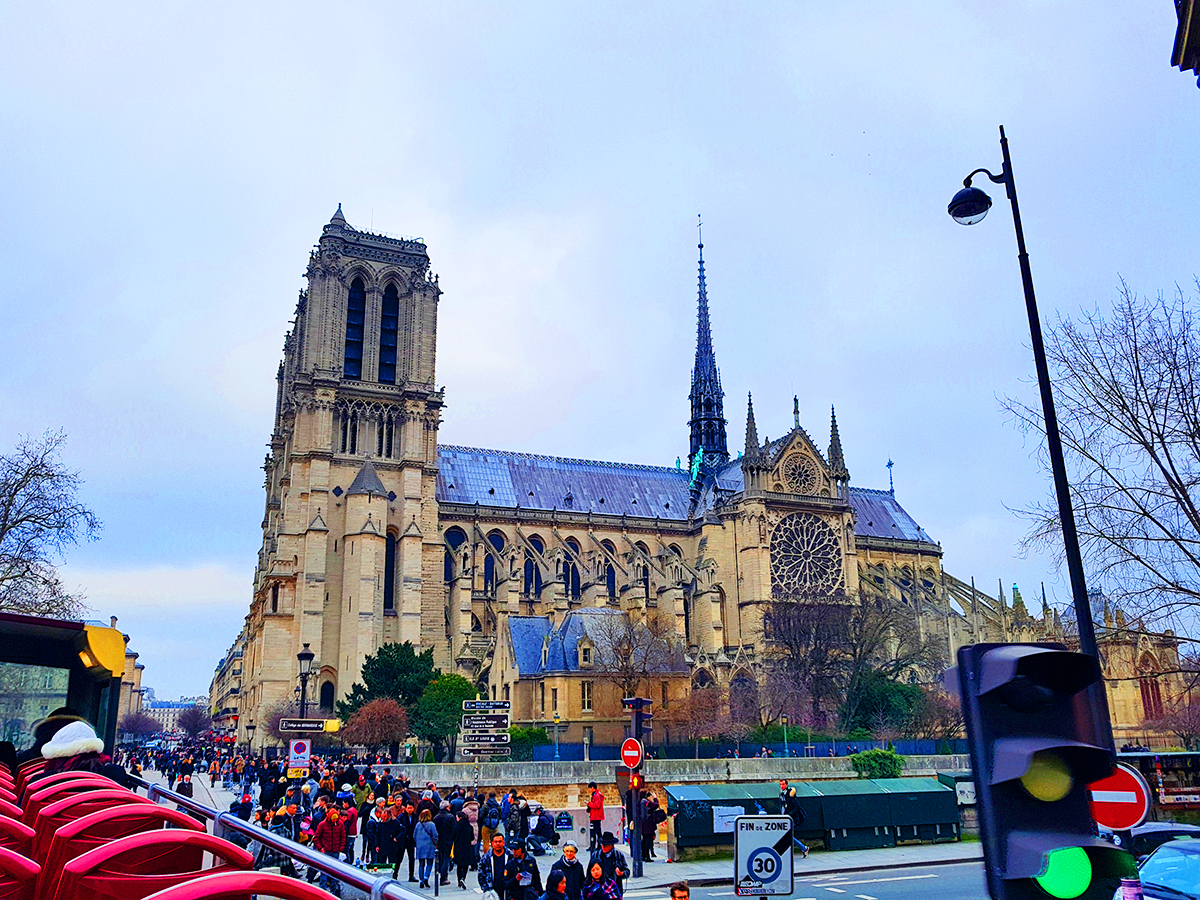- Tourist Information
- Map
- Why is the medieval Catholic cathedral Notre Dame famous?
- Napoleon’s coronation
- Impressive dimensions and unique architectural style
- Emmanuel bell
- The organ of Notre-Dame
- Unesco heritage
- What legends does the Notre Dame Cathedral in Paris hide?
- The Legend of Quasimodo, the Hunchback of Notre-Dame
- The Hunchback Who Cried the Bells
- The Legend of the Seven Headless Men
- The Holy Grail is hidden in the cathedral
- The curse of those who destroy stones
- Notre Dame and the Alchemists Philosopher’s Stone
Tourist Information
| Year | 1345 |
| Type | Catholic cathedral |
| Style | French Gothic |
| Status | Damaged by fire on the 15th of April 2019, Temporarily closed. |
| Location | 6 Parvis Notre-Dame – Pl. Jean-Paul II, 75004 Paris, France, Europe |
Map
Why is the medieval Catholic cathedral Notre Dame famous?
The cathedral is dedicated to the Virgin Mary and is considered to be one of the finest examples of French Gothic architecture.
Notre Dame de Paris, also called Notre Dame Cathedral, is the most famous of the Gothic cathedrals of the Middle Ages and is distinguished by its size, age, and architecture.
Before the fire, about 12 million people visited Notre Dame Cathedral annually. It was the most visited tourist attraction in Paris.
Napoleon’s coronation
The cathedral once again became the center of attention when Napoleon Bonaparte was crowned Emperor of France in a grand ceremony held there in 1804.
Impressive dimensions and unique architectural style
Notre Dame Cathedral in Paris is considered an emblematic example of Gothic architecture. Gothic features include pointed arches, tall windows, and rich stained glass, which reflect the influences and aesthetics of that period.
The cathedral has a length of about 130 meters, a width of about 48 meters, and a height of the towers of about 69 meters. The main nave is about 33 meters high.
One of the most impressive features of the cathedral is its facade, with its famous three rose windows. The rose window on the west facade measures approximately 13 meters in diameter and features a collection of stained glass windows with religious themes.
Emmanuel bell
The cathedral has a huge bell called “Emmanuel”. This bell weighs about 13 tons and is the largest bell in the cathedral. It was cast in 1681 and is still in use.
The organ of Notre-Dame
The organ of Notre Dame has nearly 8,000 pipes controlled by five keyboards, making it one of the largest organs in France.
Unesco heritage
The Notre Dame Cathedral in Paris was included in the UNESCO World Heritage Site in 1991.
What legends does the Notre Dame Cathedral in Paris hide?
The Legend of Quasimodo, the Hunchback of Notre-Dame
This legend is inspired by Victor Hugo’s novel, “Notre Dame de Paris”. The character Quasimodo, a hunchbacked and deaf boy, was abandoned in front of the cathedral and raised by the archdeacon Claude Frollo. The legend tells the touching story of Quasimodo and his unrequited love for Esmeralda, a beautiful gypsy dancer.
The Hunchback Who Cried the Bells
It is said that on Christmas night a man with strange features and the ragged clothes of a bellman was seen climbing a tower of the cathedral. He started shouting at the bells and gestured to the sky. After ringing the bells, the man disappeared without a trace. It is believed to have been a spirit expressing a wish to be home for Christmas.
The Legend of the Seven Headless Men
It is said that on a stormy night, seven headless men were seen near the cathedral. They were looking for heads to complete their human form. People believe that these men were lost spirits or demons trying to regain their human body.
The Holy Grail is hidden in the cathedral
One of the legends claims that the Holy Grail, the chalice used by Jesus Christ during the Last Supper, was brought and hidden in the cathedral. This story is associated with the mysticism and hidden mysteries of the cathedral.
The curse of those who destroy stones
It is said that anyone who tears down or moves the cathedral’s stones will be hit with a curse. This legend could be related to the fact that the construction of the cathedral was extremely difficult work and many people died during the construction.
Notre Dame and the Alchemists Philosopher’s Stone
Alchemists claim that the main door and surrounding statues actually hide the recipe for the Philosopher’s Stone.
Notre Dame Cathedral in Paris and the concept of the “Philosopher’s Stone” have often been associated with literature and certain myths. The “Philosopher’s Stone” is a concept of alchemy, a branch of ancient science that sought to transform common metals into gold or obtain the elixir of life.
The themes of Gnostic teaching, so present in the Rex Deus traditions of initiatory spirituality, are symbolically repeated in the excess of four-petalled flowers on the western sides of the cathedrals of Amiens and Notre-Dame in Paris, which are obviously alchemical symbols.





















